
123RF (Luca Bertalli)
Few pedals are as essential to practice as they are to live performances. The guitar loop pedal allows the guitarist to accompany themselves, build complex arrangements, harmonize in one-guitar bands, develop lush atmosphere like a delay pedal and, perhaps above all, practice. Every guitarist should have one as they are not only powerful tools on stage – a loop pedal can drive a spark of creativity and help with songwriting, too. Below discover the best guitar loop pedals on the market to help enhance your playing.
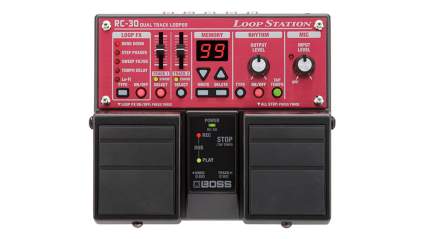
|
Amazon Customer Reviews
|
Price: $299.99 Shop at Amazon | Shop now Read our review |
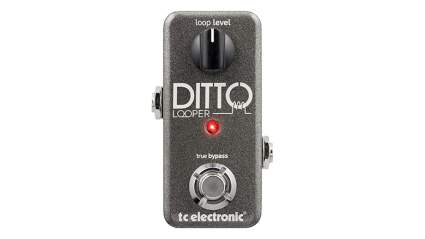
|
Amazon Customer Reviews
|
Price: $107.99 Shop at Amazon | Shop now Read our review |
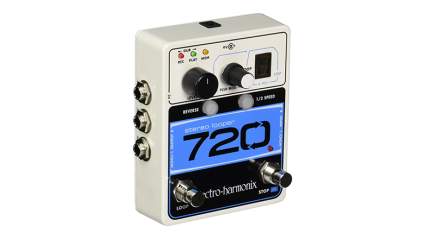
|
Amazon Customer Reviews
|
Price: $181.40 Shop at Amazon | Shop now Read our review |
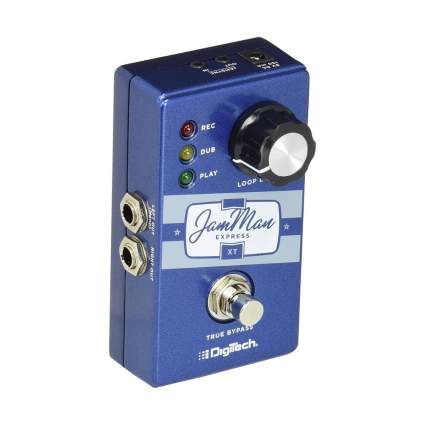
|
|
Price: $109.95 Shop now at Amazon | Shop now Read our review |
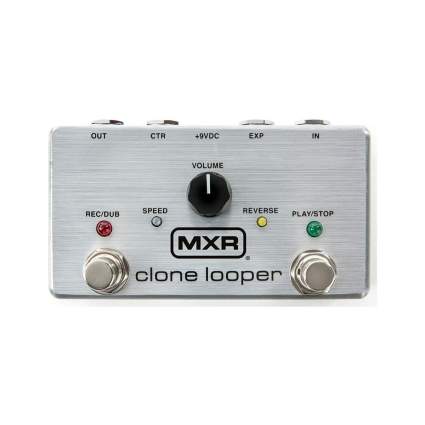
|
Amazon Customer Reviews
|
Price: $149.99 Shop at Amazon | Shop now Read our review |
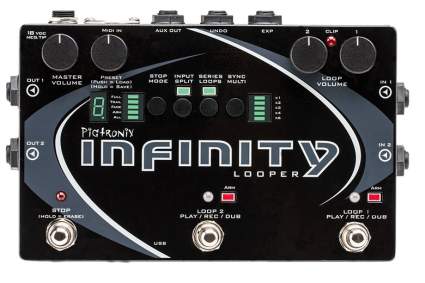
|
Amazon Customer Reviews
|
Price: $379.99 Shop at Amazon | Shop now Read our review |
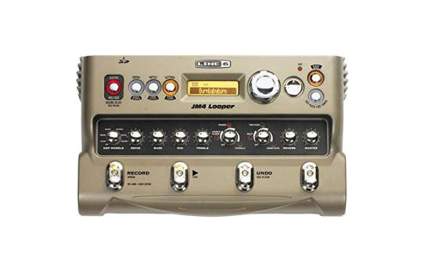
|
Amazon Customer Reviews
|
Price: $413.99 Shop at Amazon | Shop now Read our review |
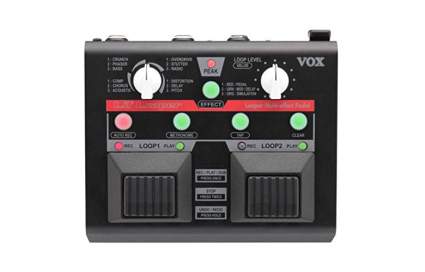
|
Amazon Customer Reviews
|
Price: $121.77 Shop at Amazon | Shop now Read our review |
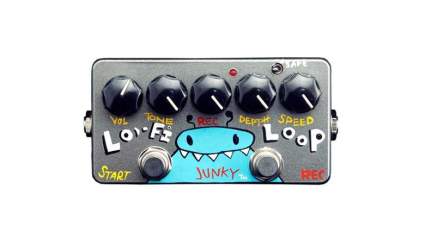
|
Amazon Customer Reviews
|
Price: $389.00 Shop at Amazon | Shop now Read our review |

|
Amazon Customer Reviews
|
Price: $129.00 Shop at Amazon | Shop now Read our review |
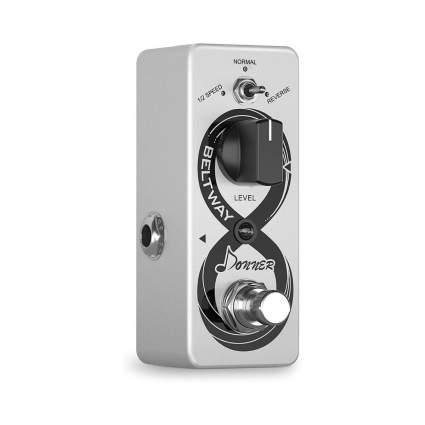
|
Amazon Customer Reviews
|
Price: $59.99 Shop at Amazon | Shop now Read our review |
-
1. Boss RC-30 Phrase Looper
Pros:- On-board effects for processing loops
- 99 storage slots for loops for a total of three hours
- Stereo ins and outs
Cons:- Pretty large, especially compared to more modern loopers
- Some find the footswitches hard to accurately press
- Overkill for simple looping needs
Naturally, we start our list with the quintessential multifaceted looper pedal. Perhaps not a great choice for the absolute beginner, but the RC-30 has just about everything you will ever need. This unit is not only stereo, it includes an XLR mic input with phantom power. Audio, up to a ridiculous three hours of it, is recorded in 44.1 kHz/16-bit WAV files, which can then be downloaded via USB.
Controls are segmented by the part of the pedal they affect. The two footswitches control recording and playback, as well as Loop FX, which has a Type selector and a separate On/Off switch. Each track has its own volume, as well as a lighted Select button. The memory phrases — of which there are 99 — have an Up/Down selector, as well as a Write and Delete button.
There’s a drum looper with ten different pre-loaded drum loops, selectable with the Type switch. You can control the output of the rhythm section, turn it on and off, and set the time with the tap tempo. Finally, when using a mic, there’s a dedicated input level. Just to top it all off, there’s an Aux In for ultimate jamming ability, or to feed samples in from other sources, like an iPad.
If that’s a bit overwhelming, you could also start with the Boss RC-1, which is still stereo and offers 12 minutes of recording time. As step up from that is the RC-2, which has ten phrases and the built-in drum patterns. The Boss RC-3 starts to look a bit more like the RC-30, minus the effects and mic in.
If all that isn’t overwhelming enough, you can always jump up to the supreme looping platform: the RC-300. If you like the core Boss looper, but want it to do everything short of make you a sandwich, they’re happy to oblige in this massive unit.
Solid discounts are available if you buy the RC-30 used on Reverb, often dipping below $200.
Specs:
- Loop time: Three hours
- Number of loops: 99
- Effects?: Yes
- Computer storage capability?: Yes, via USB
- Stereo?: Yes
Find more Boss RC-30 Phrase Looper information and reviews here.
-
2. TC Electronic Ditto Looper
Pros:- Dead simple looping
- Analog dry through and true bypass
- Five minutes of loop time with unlimited overdubs
Cons:- Other options offer longer loop time
- Somewhat prone to premature death
- Lots of cheaper knock-offs available
Of course, the Boss won’t do you any good if you can’t figure out how to use the thing. If all you want to do is layer different parts from the same source, it’s hard to go wrong with this little unit. For up to five minutes of playback, you can loop an unlimited number of guitar riffs layered atop one another, while sacrificing less pedalboard space than you do for your tuner.
Controls on the Ditto couldn’t be simpler. There’s a single knob for Loop Level and a single switch that controls all your looping functionality. When it isn’t playing, it’s true bypass. Even when it is, there’s an analog dry signal path so whatever you’re playing over your loops is purely your guitar tone without interference. It’s pretty remarkable, if technically limited, and the price is certainly right.
As with Boss, TC have a few other options for you to consider. First is the Ditto X2, which adds stereo and reverse and half-speed effects. The Ditto X4 gives you a second playable loop and seven effects, as well as the ability to import pre-recorded loops.
There are many, many, many used Ditto Loopers available on Reverb for up to one third off the price of a new unit.
Specs:
- Loop time: Five minutes
- Number of loops: 1 with unlimited overdubs
- Effects?: No
- Computer storage capability?: No
- Stereo?: No
Find more TC Electronic Ditto Looper information and reviews here.
-
3. Electro-Harmonix 720 Stereo Looper
Pros:- Stereo ins and outs
- Reverse and 1/2 speed effects
- 12 minute total loop time with 10 stores loops and unlimited overdubs
Cons:- A bit larger than necessary
- Can't sum stereo inputs to mono out
- Glitchier than competitive units
If you’re an EHX fan, they have a looper for you, as well. In many ways, this is a simpler unit than the ones above, offering a total recorded time of 12 minutes across all ten loops. That should be more than enough for most people, especially in live settings, when you know what your setlist will be each night. Still, you have a few features here that might come in handy.
For controls, you get Level, a multi-function knob, Reverse, 1/2 Speed, and Loop and Stop/FX switches. By pushing the function knob, you can change between P, L, and F modes. P lets you see where you are in the loop progression, by counting out your measures. L is the loop selector. F is a fadeout, which will change the double-tap of the Loop switch from an abrupt stop to a long fade if you want your loop to carry on without you.
This one seems a bit more geared toward performance than storage or practice and creation. It’s a bit cursed by the standard EHX pedal size, though.
You can get a simpler option in their Nano form factor with the 360 Nano Looper, which offers six minutes of looping time across 11 loops. There’s also the EHX RC-30 rival in the massively cool-looking 22500 Dual Stereo Looper.
You should easily be able to find any of these used on Reverb to save you some money.
Specs:
- Loop time: 12 minutes
- Number of loops: 10 with unlimited overdubs
- Effects?: Yes (reverse and half speed only)
- Computer storage capability?: No
- Stereo?: Yes
Find more Electro-Harmonix 720 Stereo Looper information and reviews here.
-
4. Digitech JamMan Express XT Stereo Looper
Price: $109.95Pros:- Three LED status lights for easy use
- Stereo ins and outs
- 10 minutes of recording time
Cons:- Considerable current draw
- Some noise issues
- Jacks need to be retightened often
The original JamMan was designed to compete with the Boss of a similar layout, but had one key advantage in that it had expandable memory. With the use of an SD card, you could double the recording time and number of phrase banks. For the money, though, I think the best bet is to go for the Express XT.
The JamMan is great, but it’s aging and it’s a pedalboard hog. The Express XT is much more compact, yet still offers 24-bit audio with full stereo ins and outs. The three LED layout makes it simple to see what you’re changing, which I find pretty helpful.
I use this on my own board, and this is the one that stayed on the longest, after one dead Ditto and a temporary detour with an extremely dreadful dirt-cheap Chinese knock-off. It’s true bypass and clearing the loops is totally silent.
As a word of caution, the relatively massive 150 mA current draw should really be run on its own power, even if you have a high-quality power supply. I’ve had some issues with noise on this which are rectified by moving it to its own power. Still, it’s only a little more expensive than the Ditto and I think the operation is more intuitive.
Specs:
- Loop time: 10 minutes
- Number of loops: 1 with unlimited overdubs
- Effects?: No
- Computer storage capability?: No
- Stereo?: Yes
Find more Digitech JMSXT JamMan Solo XT Stereo Looper information and reviews here.
-
5. MXR Clone Looper
Pros:- Interesting remote control options
- Double, Reverse, and 1/2 Speed
- Six minutes of recording with unlimited overdubs
Cons:- Short recording time considering it's a newer offering
- Odd pedal layout may not work for all boards
- Some quality control issues
A newer offering from MXR, this looper offers features seen on the rest of the list but combines the compact layout with interesting remote options for added control. MXR fans may prefer to stick with a brand they trust, but others might like the feature set, too.
At its heart, it’s a simple six-minute looper with unlimited overdubs and mono operation. The two footswitch layout makes it a little bit clearer for recording on the fly, as the one-switch options sometimes don’t do exactly what you expect.
This also features CTR and EXP jacks. You can use an expression pedal plugged into the EXP jack to adjust the loop volume. Using an MXR Tap Tempo switch plugged into the EXP jack allows you to use Loop Once mode so you can trigger the loop whenever you want, including interrupting it for a stutter effect. You can also plug that Tap Tempo switch into the CTR jack to change between Normal, Double, 1/2, and Reverse modes, as well as silently clear the loop.
The audio itself is exceptionally high quality with an 88.2kHz sample rate, to top it all off.
This is relatively new, but there are already a few used units kicking around Reverb to save you some money.
Specs:
- Loop time: Six minutes
- Number of loops: 1 with unlimited overdubs
- Effects?: Yes, double speed, half speed, and reverse
- Computer storage capability?: No
- Stereo?: No
-
6. Pigtronix SPL Infinity Looper
Pros:- Saves all loops to an SD card - expansion potential
- Advanced I/O options, including MIDI
- Series mode allows for automatic loop switching
Cons:- Requires 18v power
- Massively complicated at first
- Very expensive
This Pigtronix unit appears, at first glance, to be a familiar two-loop layout pedal. As the price tag and controls indicate, however, it’s quite a bit more than that. It’s an incredibly detailed, incredibly powerful machine that focuses on live playing by introducing series or parallel loop interactions. The manual is about 50 pages long and believe me when I say it doesn’t include a whole lot of detail even at that. To really get to know this pedal, you’ll have to spend time with it.
Controls are plentiful and include Master Volume, Preset, Loop Volume 1 and 2, Stop Mode, Input Split, Series Loops, Sync Multi, and switches for Stop, Loop 1, and Loop 2. The Stop Mode switch allows you to choose between five different stop types, including Trails and Fade. Loop 2 can be automatically lengthened up to six times the length of the recorded sample.
The pedal considers a loop bank to be a pair of recordings, one for each loop, and gives you 50 of these slots on an 8GB SD card, which the unit relies on for memory. Getting a larger card increases the number of slots, as well as the recording time. There’s an expression pedal input that can be set to control various parameters, as well as a MIDI in.
The real key to this pedal is Series mode, which lets you switch between the two loops of a preset automatically, as in going between verses and choruses. Perhaps the one relatively minor drawback is that it requires 18V power, and so will need special attention on your board.
This is made up for with an input for a momentary pedal that will let you Undo your last overdub, as well as an Aux Out so you can send a signal either to front of house or to your drummer’s monitors. It’s a beast of a machine aimed at professional-level looping.
If this is all overwhelming, Pigtronix also make the Infinity 2, which is far simpler and less expensive.
These are kind of rare, but you might be able to turn up a used one on Reverb with a little digging.
Specs:
- Loop time: Varies (uses SD card for storage; online sources say 8GB grants up to 2 hours of recording time)
- Number of loops: 50 (per loop)
- Effects?: Yes (reverse only)
- Computer storage capability?: Yes, via USB
- Stereo?: Yes
Find more Pigtronix SPL Infinity Looper information and reviews here.
-
7. Line 6 JM4 Looper
Pros:- On-board effects and amp models
- Stereo outputs
- SD card memory
Cons:- Only 24 minutes of loop time
- Overly large
- Starting to show its age compared to more modern offerings
If you love the DL4, but have ever thought that you would like the looping part of it to do more, this is the pedal for you. Line 6 separated the looper function and bulked it up with a ton of features. It even still includes delay, as well as reverb, chorus, echo, and 12 amp models. Line 6 cannot help themselves from shoving their amp models into every product. If that’s something you’re into, this is the looper for you.
If it can be controlled, the knob or switch exists for it on this unit. There’s a Record Select to choose between the guitar input or the mic/aux. There are buttons for Drums/Song, Inputs/Level, Settings/Tone, a large scrolling knob, a selector pad, a Save button, and a tap tempo/tuner button. Knobs include Amp Models, Drive, Bass, Mid, Trebel, Chorus/Flanger/Phaser/Tremolo selector, Delay/Tape Echo/Sweep Echo selector, Reverb, and Channel Volume.
Switches include Record, Play/Stop, Undo, and Half Speed. For inputs, there is a 1/4 inch instrument, 1/4 inch aux, XLR mic with trim knob, and 1/8 inch aux. For outputs, you get 1/8 inch headphone jack, 1/4 inch mono and 1/4 inch stereo outs. In addition to all of that, you can call up over 100 jam tracks and drum grooves recorded by professional session players.
Given the immense arsenal of tones and backing tracks, this looper is aimed more at creation than live performance. Of course, you can certainly use it live, but I think this is more at home in the studio when you’re trying to encourage new ideas.
This has been out a long time, so finding used units on Reverb is pretty easy and will save you a good chunk of change.
Specs:
- Loop time: 24 minutes
- Number of loops: 100
- Effects?: Yes
- Computer storage capability?: Yes, via SD card
- Stereo?: Yes
-
8. Vox VLL1 Lil Looper Multi-Effect Pedal
Pros:- On board effects
- Super simple operation
- Tap tempo allows for quantization
Cons:- 90 second loops are awfully short these days
- A bit expensive for what it is
- No ability to back loops up to a computer
On the other hand, if you’re anything like me, those ultra-powerful units are a bit overwhelming and tend to distract from the business of playing guitar. This Vox pedal is downright spartan by comparison, but offers an interesting blend of features cherry-picked from the larger and more expensive units.
This little guy gives you two loops of 90 seconds, which can be effected with effects from three banks, Pedal, Mod/Delay, and Simulation. Pedal includes drive type effects with Crunch, Overdrive, Compression, and Distortion. Mod/Delay has Phaser, Stutter, Chorus, and Delay, while Simulation offers Bass, Radio, Acoustic, and Pitch. The LED of the Effect button changes to indicate which bank the selector knob on the left is choosing.
There’s a Loop Level knob, of course, as well as buttons for Auto Record, Metronome, and Clear. The Tap allows you to tap in your tempo, which will cause the unit to quantize the playing loop. The switches offer the standard controls for each loop, including Undo/Redo.
There’s an Input, Output, and Extension Switch, as well as toggles for Standby and On and Mic or Guitar line level. You can also run this off of a battery, for some reason.
Specs:
- Loop time: 90 seconds
- Number of loops: 2 with unlimited overdubs
- Effects?: Yes
- Computer storage capability?: No
- Stereo?: No
Find more Vox VLL1 Lil Looper Multi-Effect Pedal information and reviews here.
-
9. ZVex Effects Hand Painted Lo-Fi Loop Junky
Pros:- Great for experimentation
- Safe switch allows you to preserve one perfect loop
- Direct signal gets a little polish
Cons:- More for noise than looping
- Strange pedal layout
- Crazy expensive
Let’s get weird for a second here. Part of the joy of looping is experimentation. It’s being able to coax ever stranger combinations of noises without degrading your live tone, so you can melt the faces off everyone in the first ten rows. More sound is always better. To that end, this looper pedal isn’t for stacking many intricate layers of technically-proficient playing on one another. This one is for making noise.
Controls include Volume, Tone, Record level, Depth, and Speed. These change the warped nature of the 20-second, single-loop playback, including getting some Leslie cabinet sounds out of the higher speeds and depths.
There’s a Safe switch in case you’ve created a loop so amazing it can’t be easily repeated. The LED blinks once at the end of the loop, and you’ll have to get pretty good at hitting both knobs at once when you’re done recording so that the loop begins right away.
It’s a noise machine. Try it out. There’s also the Instant Lo-Fi Junky, which takes the whole thing a step further and is also available in a vertical version.
Used Lo-Fi Loop Junky pedals go for just under $300 used on Reverb, while the cheapest option is probably a used Instant Lo-Fi Junky, which begins to approach $200 used.
Specs:
- Loop time: 20 seconds
- Number of loops: 1
- Effects?: Kinda!
- Computer storage capability?: No
- Stereo?: No
Find more ZVex Effects Hand Painted LO-FI Loop Junky information and reviews here.
-
10. NUX Loop Core
Pros:- Six hours of loop time and 99 stored loops
- Ability to save and import loops from a computer
- Tap tempo allows you to change loop tempo without key change
Cons:- Longevity is questionable
- Cheaper jacks than competitors
- Some units have a flaw with the pre-programmed drum patterns
Returning once more to the standard pedal size looper hosting 99 memory phrases, this Nux unit is a low-cost alternative to consider. Like other pedals on this list, this is a stereo unit, complete with stereo aux in. The 40 included drum patterns are controllable with tap tempo, while the Ctrl In lets you switch between loops on the fly with an external switch.
For controls, you get a stacked Loop/Rhythm level, Phrase selectors, Save/Delete, Rhythm, Tap Tempo, and Stop Modes. There are three Stop Modes: Normal, Play to Measure End, and 10 second Fade Out. It has everything you need for a great price.
The Tap Tempo is also notable because you can change the playback tempo of a previously recorded loop without any pitch variation. Kind of a nifty little trick for this device.
There’s an upgrade available in the form of the Loop Core Deluxe, which improves audio resolution, increases recording time to eight hours, and has an upgraded drum machine.
Used versions are easy enough to find on Reverb for a few bucks off of new.
Specs:
- Loop time: 6 hours
- Number of loops: 99
- Effects?: No
- Computer storage capability?: Yes, via USB
- Stereo?: Yes
-
11. Donner Beltway Looper
Pros:- 10 minute recording time
- 1/2 Speed and Reverse modes
- Dirt cheap
Cons:- Tend to be noisy
- Will almost certainly not last a very long time
- One of the endless Chinese copycat pedals
If this is your first foray into looper pedals, you could do a lot worse than this ultra-cheap offering from Donner. This is the second-generation of Donner’s tiny looping pedal and it adds a few new features.
Like the first version, it can record up to 10 minutes of audio with unlimited overdubs and has a USB plug for importing and exporting loops as needed. It also records in 24-bit audio with a 32-bit signal processor.
The new features are a couple of effects. The switch at the top allows you to choose between Normal playback, or effect your loop by switching to 1/2 Speed or Reverse. That makes it most similar to the Electro-Harmonix offering on this list, while taking after the Ditto’s familiar operation.
Ultimately, these pedals will probably not stand the test of time, but if you want to get looping now, it’s certainly cheap enough.
This is cheap enough to not really bother searching for used units, but occasionally the old Donner Deluxe Looper appears used on Reverb if you want more options and stereo.
Specs:
- Loop time: 10 minutes
- Number of loops: 1 with unlimited overdubs
- Effects?: Yes, 1/2 speed and reverse
- Computer storage capability?: Yes, via USB
- Stereo?: No
What is a loop pedal?
For a guitarist, my introduction to looper pedals was pretty strange. My band opened for local cellist Kristen Miller, who came out onto the stage with a mic, her cello, and a Boss RC-20. At first, I thought it was a Space Echo, which would have been a pretty cool choice, too.
Instead, she used her looper to build up a one-woman orchestral arrangement and then sang over it. It was pretty spectacular. Years later, I saw Zoe Keating do the same thing. I even saw a fellow musician in the local scene use one with a ukulele. It was a good, long while before I actually saw a guitarist use one.
Looper pedals are incredibly versatile machines. They add layers of complexity to any song, allowing one person to play many different things at once. The premise is relatively simple, with each of these pedals offering the ability to record and playback a finite loop of audio. Where each of these differs comes down to what you can do with that audio or how many bits of audio you can use at one time.
Like anything else in life, even the seemingly obvious ideas can easily be built upon, and looping pedals vary from single-button nano effects to sprawling floor-bound workstations. Just as with any other effect, there is most certainly a looper to match your style of musician. It's just a matter of deciding how much you want to be able to manage at once.
How do you use a guitar looper?
It depends on which model you opt for, but there are usually two main styles:
1. A single button looper allows you to hit the footswitch once to begin recording and then hit it again to begin playback. While that plays, you can hit the switch again to overdub. Usually, these will allow you to hold the switch down to either erase the last overdub or the entirety of what's currently playing back.
2. Two switch options separate these functions into dedicated footswitches. While this tends to be clearer and more intuitive to operate, it's also possible to confuse them when playing live. They also tend to come in larger enclosures, so you have to have the space for them. That said, they also tend to be much more powerful devices.
Where you place a looper in your pedal chain depends on what you want recorded. If you want the ability to change effects as a loop plays back, you might want it to be the first pedal in the chain.
However, if you want to use one set sound for the loop and switch to a different sound to play something over it, you'll want to put it at the end, or even in the effects loop of your amp.
This will be impacted to some degree by whether you're using a stereo pedal and a stereo amp setup, but a little experimentation should be able to sort this for you relatively quickly.
What about the Chase Bliss Blooper?
As time of this writing, the immensely complicated, but incredibly nuanced Blooper is available to preorder. At its heart, it is a loop pedal like the rest of them on this list, however, the feature set is far more advanced, allowing for the application of effects to a recorded loop as it plays, which can then be removed, if desired.
There's quite a lot more to it than that, so watch the Knobs intro video (this pedal is a collaboration between Knobs and Chase Bliss) and then the much longer Read the Manual walkthrough.
To preorder, you can either go to Chase Bliss directly or, in preparation for paying its very high cost, you can sell some gear and use Reverb bucks to pre-order it there.
See Also: